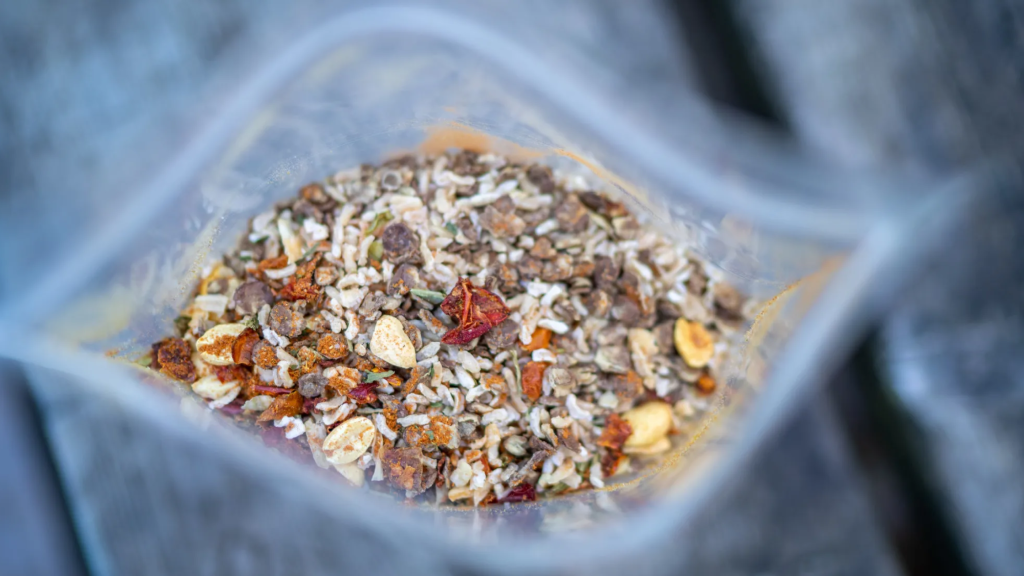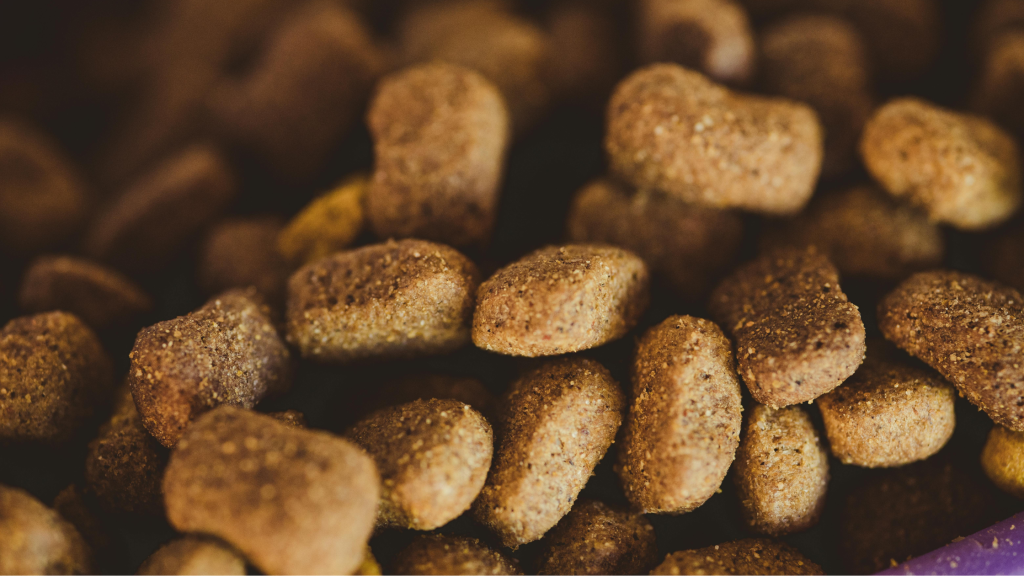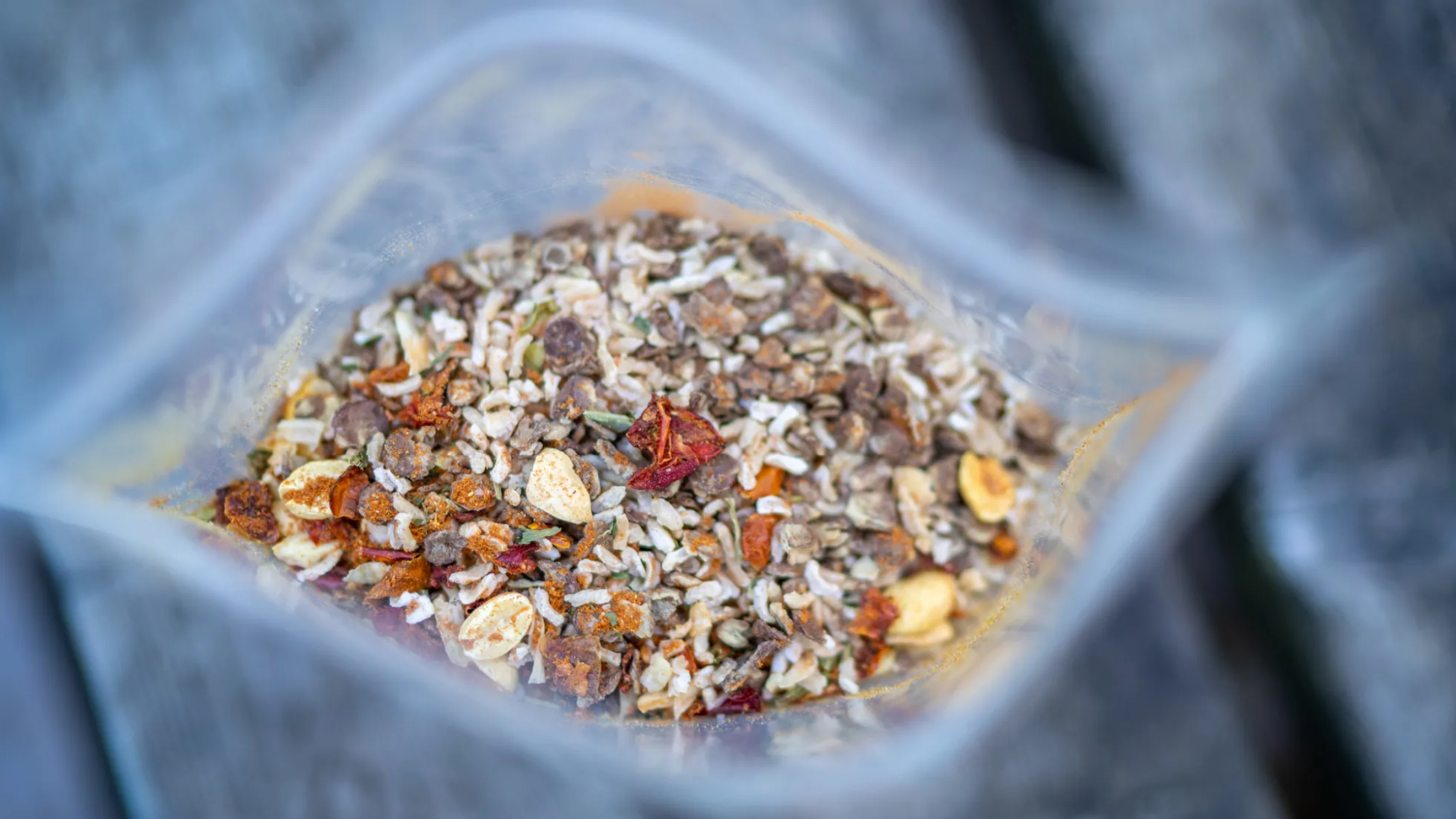How food structure impacts rehydration in freeze-dried products
What makes freeze-dried foods so remarkable when it comes to rehydration? Anyone who has poured hot water over a freeze-dried meal on a mountain trail or watched a pet devour a bowl of rehydrated freeze-dried kibble has seen the transformation: dry, weightless pieces spring back to life, regaining their original texture, aroma, and flavor. The secret lies in the science of freeze-drying and how it preserves the food’s structure for optimal water absorption and flavor release.

How freeze-dried foods are made
Freeze-drying, or lyophilization, is a specialized dehydration process that removes water from food while preserving its original structure and nutrients. The process involves three main steps: freezing the food, reducing the pressure to induce sublimation (where ice turns directly into vapor), and then removing any remaining moisture under vacuum conditions. This approach is especially gentle, protecting sensitive vitamins, enzymes, and flavors.
Unlike traditional dehydration, which uses heat and can cause foods to shrink, toughen, or lose nutrients, freeze-drying maintains the food’s cellular architecture. The result is a light, airy product that looks much like the original, only dry and shelf-stable.
Why freeze-dried foods rehydrate so effectively
The magic of freeze-dried foods lies in their porous structure. During freeze-drying, ice crystals form within the food and are then removed, leaving behind a network of tiny holes. This porous matrix acts like a sponge, allowing water to flow back in rapidly and evenly when rehydration occurs.
- Rapid Water Absorption: The open structure allows water to penetrate quickly, restoring the food’s original texture and mouthfeel in minutes.
- Flavor Release: Because the food’s structure is preserved, flavors are locked in and released as soon as water is added, providing a taste experience close to fresh.
- Nutrient Retention: Freeze-drying retains up to 97% of nutrients, so rehydrated foods are not just tasty, they’re nourishing.
Outdoor Nutrition
Real-world performance with Nomad Nutrition
For outdoor enthusiasts, freeze-dried meals are more than just convenient, they’re essential. Companies like Nomad Nutrition have built their reputation on delivering plant-based, nutrient-rich meals that are lightweight and easy to prepare anywhere. Their meals, like Kathmandu Curry or Irish Shepherd’s Pie, are designed to rehydrate quickly, even in challenging outdoor conditions.
The porous structure of freeze-dried foods means that hot water can penetrate every grain of rice or piece of vegetable, restoring not just the appearance, but also the texture and flavor of the original meal. This is crucial for adventurers who need a satisfying, nourishing meal at the end of a demanding day. Nomad Nutrition’s commitment to quality and their use of advanced dehydration technology ensures that each meal delivers both taste and nutrition, no matter where your journey takes you.
Pet Food
Bringing freshness back with Lecker Bites
Freeze-dried foods aren’t just for people, they’re revolutionizing pet nutrition as well. Lecker Bites is a leader in premium freeze-dried dog food, offering complete meals and treats that retain all the nutrients and flavors of fresh ingredients.
For larger items like meal patties, Lecker Bites recommends adding warm water to rehydrate the food before serving. This not only makes the food easier for pets to chew and digest but also brings out the flavors and aromas that pets love. The process is simple: add an equal amount of warm water to the freeze-dried food, let it sit for five to ten minutes, and the meal is ready. This approach preserves the nutritional value and makes mealtime more enjoyable for pets, especially those with sensitive stomachs or dietary restrictions.

The role of microwave drying in food innovation
While freeze-drying sets the gold standard for rehydration and shelf stability, it comes with high energy costs and long processing times. Commercial freeze dry machines and industrial freeze dryers require significant investment and infrastructure. This is where microwave drying equipment, like EnWave’s Radiant Energy Vacuum (REV™) technology, is changing the landscape.
Microwave vacuum drying uses electromagnetic waves in a vacuum environment to remove moisture quickly and efficiently. The process preserves color, flavor, and nutrients, and can even improve color retention compared to freeze-drying. Processing times are dramatically reduced, from days to minutes, making it ideal for commercial food drying, product development, and food innovation.
- Energy efficiency: Microwave vacuum drying uses a fraction of the energy required for freeze-drying, making it a more sustainable choice.
- Versatility: This method can produce a range of textures, from crunchy to chewy, expanding the possibilities for product innovation in snacks, dried fruit, and more.
- Compact footprint: Microwave drying systems can be configured for batch or continuous operation and often require less space than traditional freeze-drying equipment.
Hybrid approaches: The best of both worlds
Recent research highlights the benefits of combining freeze-drying and microwave drying. Hybrid microwave freeze-drying can speed up the process, reduce energy use, and enhance color and nutrient retention. This approach is gaining traction in food tech and product development, allowing brands to deliver high-quality, shelf-stable foods with superior rehydration and flavor.
Why structure matters for rehydration and flavor
The structure created by freeze-drying is key to why these foods bounce back so well. The porous matrix allows for:
- Uniform water uptake: Water is absorbed evenly, avoiding soggy or dry spots.
- Quick preparation: Meals or snacks are ready to eat in minutes, ideal for outdoor nutrition and convenience foods.
- Flavor integrity: Volatile aroma compounds are trapped during drying and released upon rehydration, delivering a fresh taste experience.
The future of food processing
As consumer demand grows for convenient, healthy, and flavorful foods, whether for outdoor adventures, emergency preparedness, or pet nutrition, manufacturers are looking for drying technology that delivers on all fronts. Freeze-drying and microwave drying are leading the way, each with unique strengths.
EnWave’s REV™ microwave drying technology is at the forefront of food innovation, offering commercial and industrial food producers a faster, more energy-efficient path to high-quality dried foods.
Key takeaways for product developers and food brands
- Freeze-dried foods rehydrate quickly and fully because of their porous structure, delivering texture and flavor close to fresh.
- Microwave vacuum drying offers faster processing, better color retention, and significant energy savings, making it a powerful tool for food innovation.
- Hybrid drying approaches combine the best of both methods for optimal quality and efficiency.
- Applications range from outdoor nutrition and dried fruit snacks to pet food and beyond.
Explore more about how EnWave’s microwave drying equipment is transforming food processing and product development at enwave.net or contact us.


